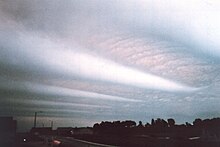Removing the non {{Gno[/\/\()} ή}} ΙΤΣ Κ GnoΜονικλυ ακα [wind of boxezSurface wave From Wikipedia, the free encyclopedia Jump to navigationJump to search A diving grebe creates surface waves. In physics, a surface wave is a mechanical wave that propagates along the interface between differing media. A common example is gravity waves along the surface of liquids, such as ocean waves. Gravity waves can also occur within liquids, at the interface between two fluids with different densities. Elastic surface waves can travel along the surface of solids, such as Rayleigh or Love waves. Electromagnetic waves can also propagate as "surface waves" in that they can be guided along with a refractive index gradient or along an interface between two media having different dielectric constants. In radio transmission, a ground wave is a guided wave that propagates close to the surface of the Earth.[1] Contents 1 Mechanical waves 2 Electromagnetic waves 2.1 Microwave field theory 2.2 Surface plasmon polariton 2.3 Sommerfeld–Zenneck surface wave 3 See also 4 References 5 Further reading 5.1 Standards and doctrines 5.2 Books 5.3 Journals and papers 5.4 Other media 6 External links Mechanical waves Further information: Gravity wave In seismology, several types of surface waves are encountered. Surface waves, in this mechanical sense, are commonly known as either Love waves (L waves) or Rayleigh waves. A seismic wave is a wave that travels through the Earth, often as the result of an earthquake or explosion. Love waves have transverse motion (movement is perpendicular to the direction of travel, like light waves), whereas Rayleigh waves have both longitudinal (movement parallel to the direction of travel, like sound waves) and transverse motion. Seismic waves are studied by seismologists and measured by a seismograph or seismometer. Surface waves span a wide frequency range, and the period of waves that are most damaging is usually 10 seconds or longer. Surface waves can travel around the globe many times from the largest earthquakes. Surface waves are caused when P waves and S waves come to the surface. Examples are the waves at the surface of water and air (ocean surface waves). Another example is internal waves, which can be transmitted along the interface of two water masses of different densities. In theory of hearing physiology, the traveling wave (TW) of Von Bekesy, resulted from an acoustic surface wave of the basilar membrane into the cochlear duct. His theory purported to explain every feature of the auditory sensation owing to these passive mechanical phenomena. Jozef Zwislocki, and later David Kemp, showed that that is unrealistic and that active feedback is necessary. Electromagnetic waves Further information: Ground wave Ground waves are radio waves propagating parallel to and adjacent to the surface of the Earth, following the curvature of the Earth. This radiative ground wave is known as Norton surface wave, or more properly Norton ground wave, because ground waves in radio propagation are not confined to the surface. Another type of surface wave is the non-radiative, bound-mode Zenneck surface wave or Zenneck–Sommerfeld surface wave.[2][3][4][5][6] The earth has one refractive index and the atmosphere has another, thus constituting an interface that supports the guided Zenneck wave's transmission. Other types of surface wave are the trapped surface wave,[7] the gliding wave and Dyakonov surface waves (DSW) propagating at the interface of transparent materials with different symmetry.[8][9][10][11] Apart from these, various types of surface waves have been studied for optical wavelengths.[12] Microwave field theory]
Wind wave
In fluid dynamics, a wind wave, or wind-generated wave, is a water surface wave that occurs on the free surface of bodies of water. Wind waves result from the wind blowing over a fluid surface, where the contact distance in the direction of the wind is known as the fetch. Waves in the oceans can travel thousands of kilometres before reaching land. Wind waves on Earth range in size from small ripples, to waves over 30 m (100 ft) high, being limited by wind speed, duration, fetch, and water depth.[1]
When directly generated and affected by local wind, a wind wave system is called a wind sea. Wind waves will travel in a great circle route after being generated – curving slightly left in the southern hemisphere and slightly right in the northern hemisphere. After moving out of the area of fetch, wind waves are called swells and can travel thousands of kilometers. A noteworthy example of this is waves generated south of Tasmania during heavy winds that will travel across the Pacific to southern California, producing desirable surfing conditions. Swell consists of wind-generated waves that are not significantly affected by the local wind at that time. They have been generated elsewhere and sometimes previously.[2] Wind waves in the ocean are also called ocean surface waves, and are mainly gravity waves.
Wind waves have a certain amount of randomness: subsequent waves differ in height, duration, and shape with limited predictability. They can be described as a stochastic process, in combination with the physics governing their generation, growth, propagation, and decay – as well as governing the interdependence between flow quantities such as: the water surface movements, flow velocities and water pressure. The key statistics of wind waves (both seas and swells) in evolving sea states can be predicted with wind wave models.
Although waves are usually considered in the water seas of Earth, the hydrocarbon seas of Titan may also have wind-driven waves.[3][4][5]






















 (
(



Comments